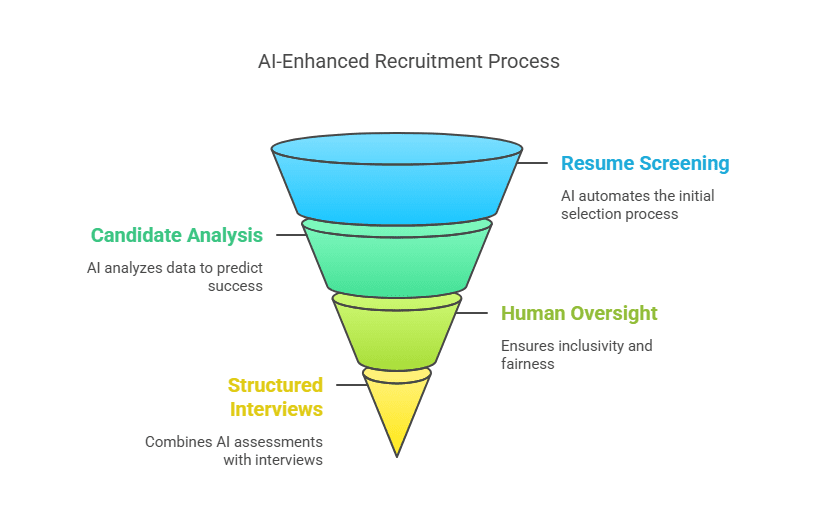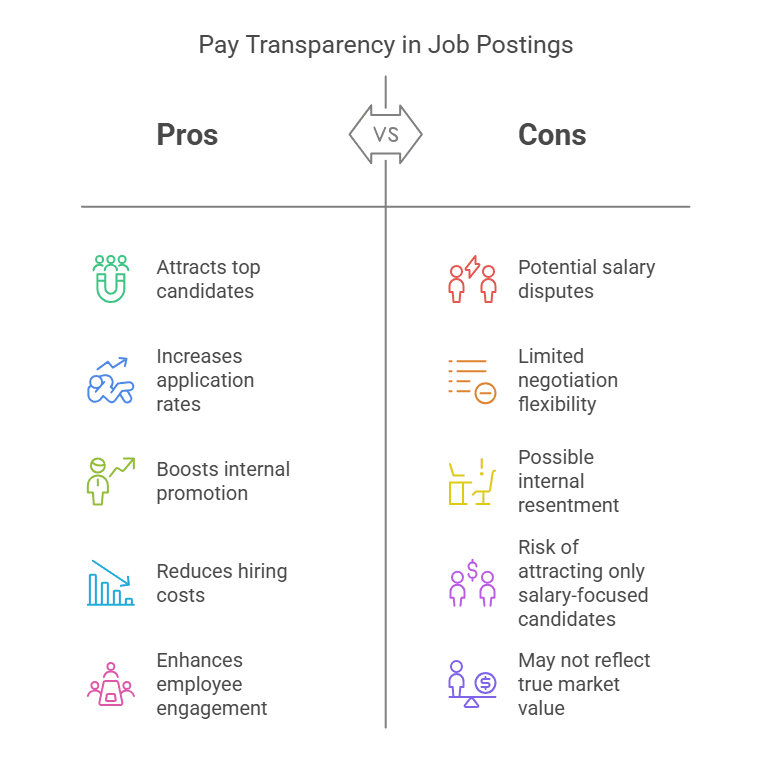
The hiring landscape is evolving rapidly, and flexibility is just one of the many factors shaping talent acquisition. With AI, skills-based hiring, and pay transparency becoming key priorities, businesses must adapt to stay competitive.
In 2025, companies that fail to adapt to these changes risk losing top candidates to competitors that prioritize flexibility, diversity, and innovation. So, what should HR professionals and business leaders focus on?
This blog will explore 7 key hiring trends for 2025 and provide actionable strategies to future-proof your recruitment process.
The Shift to Skills-Based Hiring: Why Degrees No Longer Define Talent
For years, companies relied on degree-based hiring to filter candidates. But with skills gaps growing across industries, businesses are shifting toward competency-based recruitment. Skills-based hiring prioritizes a candidate’s abilities and experience over formal education, allowing employers to focus on proven competencies that directly impact job performance.
According to recent data, job postings mentioning “skills-based hiring” have seen a significant increase, with reports stating that the usage has risen by around 12% over the past year, indicating a growing trend towards prioritizing skills over traditional qualifications in hiring practices. Source: Testlify
Why This Matter:
- Relying only on degrees limits the talent pool and can unintentionally exclude diverse candidates.
- Tech giants like Google and Tesla have already moved away from degree requirements in favor of skill assessments and project-based hiring.
- With AI-driven assessments, recruiters can now test problem-solving skills, creativity, and adaptability in real-time.
Pro Tip: Rewrite your job descriptions to focus on skills, experience, and results rather than specific degrees.
AI in Hiring: The Balance Between Efficiency & Bias
Artificial Intelligence (AI) is now a powerful tool in recruitment, automating everything from resume screening to interview scheduling.
How AI Benefits Hiring:
- Saves recruiters hours by automating candidate screening.
- Improves hiring efficiency by analyzing millions of resumes instantly.
- Uses machine learning to predict candidate success based on past hiring data.
Best Practices:
- Use AI for efficiency but keep human oversight for inclusivity.
- Ensure AI tools are audited for fairness and bias mitigation.
- Combine AI-driven assessments with structured human interviews for a balanced hiring process.

The Risk: AI can also create algorithmic bias, unintentionally excluding diverse candidates if trained on biased datasets.
Remote & Hybrid Work: The New Norm, Not a Perk
The pandemic changed how people work, and now flexible work options are a top priority for job seekers.
Research for the midyear update of Robert Half’s Demand for Skilled Talent report found that 37% of U.S. job seekers are interested in a fully remote position, while 60% would like a hybrid role. Source: Robert Half
What This Means for Employers:
- Companies resisting remote work are struggling to attract top talent.
- Gen Z and Millennials value work-life balance more than previous generations.
- Employees expect clear policies on remote work, including tech support and flexible hours.
Pro Tip: If offering hybrid work, make sure managers are trained in leading distributed teams effectively.
Employer Branding & the Rise of the Employee Value Proposition (EVP)
Today’s job seekers don’t just want a paycheck—they want to work for companies that align with their values, mission, and career growth.
What Defines a Strong EVP?
- Diversity, Equity & Inclusion (DE&I): Companies prioritizing diversity attract more skilled, engaged employees.
- Career Development: Employees want growth opportunities, mentorship, and leadership pathways.
- Company Culture: A business’s reputation on Glassdoor, LinkedIn, and social media directly impacts hiring success.
Pro Tip: Regularly audit your EVP and update job postings to highlight company culture, career growth, and DE&I efforts.
Addressing Talent Shortages with Internal Mobility
Rather than competing for external talent, companies are investing in upskilling their current employees.
Why This Matters:
- Promoting internally boosts retention and reduces hiring costs.
- Reskilled employees adapt faster than external hires.
- Businesses investing in training programs see higher employee engagement and productivity.
Pro Tip: Create career pathing initiatives that encourage employees to explore new roles within the company.
Pay Transparency: A Competitive Advantage in Hiring
With new laws requiring salary disclosure, candidates expect compensation transparency from the start.
Skilled talent will always be in high demand. Embracing pay transparency in your job postings can help attract and engage top candidates. In fact, 91% of U.S.-based respondents said that including salary ranges in a job post would impact their decision to apply. Source: LinkedIn
How to Adapt:
- Ensure job descriptions include fair, market-aligned salary information.
- Train hiring managers on open compensation discussions.

Employer Branding & Social Proof: The X-Factor in Hiring
In 2025, a strong online presence will directly impact recruitment success.
Must-Haves for Employer Branding:
- Employee testimonials on LinkedIn, Glassdoor, and company blogs.
- Behind-the-scenes content showcasing workplace culture.
- Thought leadership posts from executives and HR leaders.
Pro Tip: Turn your employees into brand ambassadors by encouraging them to share company content on LinkedIn.
Final Thoughts: Future-Proof Your Hiring Strategy for 2025
The hiring landscape in 2025 is evolving rapidly, and businesses that adapt will have a clear advantage in attracting and retaining top talent. The shift toward skills-based hiring is creating new opportunities for companies to tap into a broader, more diverse candidate pool, while AI-driven recruitment tools are making hiring processes more efficient—though they must be balanced with human oversight to prevent bias.
At the same time, candidate expectations have changed. Flexibility is no longer a perk but a requirement, with remote and hybrid work playing a critical role in job satisfaction. Pay transparency is becoming a standard practice, and employer branding has never been more essential. Employees want to work for companies that offer more than just a paycheck—they seek purpose, inclusivity, and career growth.
To stay ahead, businesses need to rethink their hiring strategies, invest in technology, and focus on creating a workplace culture that attracts top talent. By embracing these trends and continuously adapting to industry changes, organizations can build resilient, high-performing teams ready for the challenges of the future.
If your company wants to stay competitive in today’s talent-driven market, now is the time to take action. Is your hiring strategy ready for 2025? Contact City Personnel today to ensure you’re ahead of the curve.






